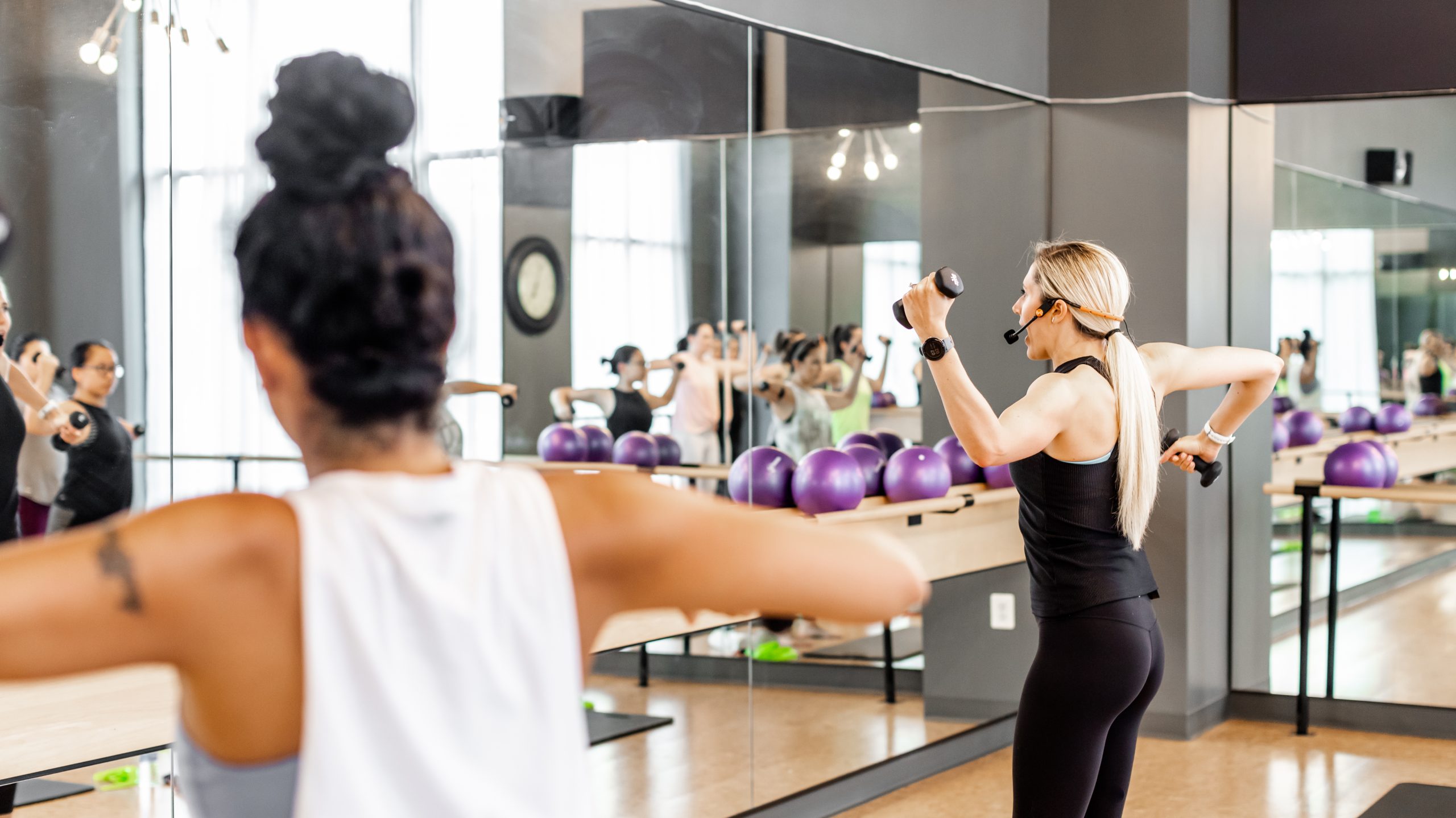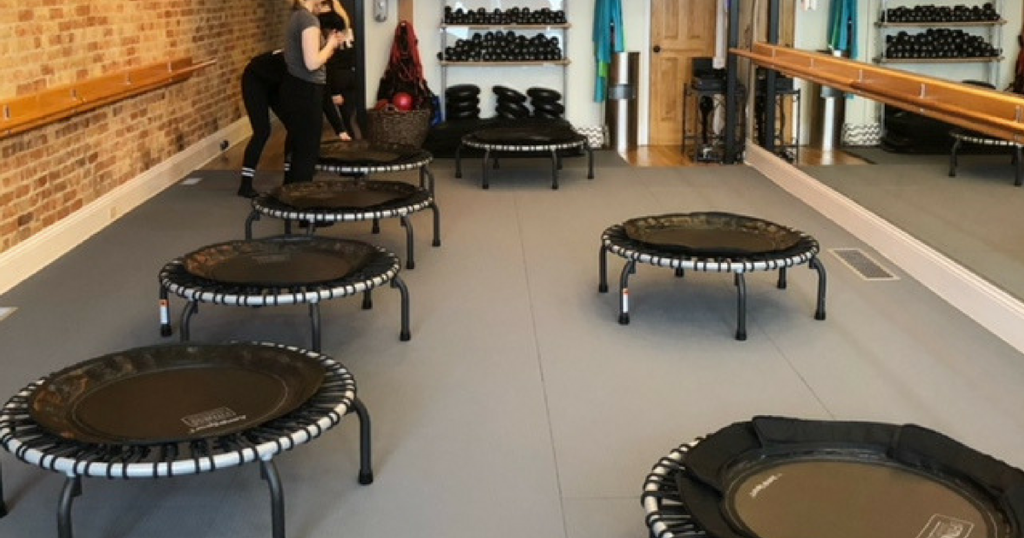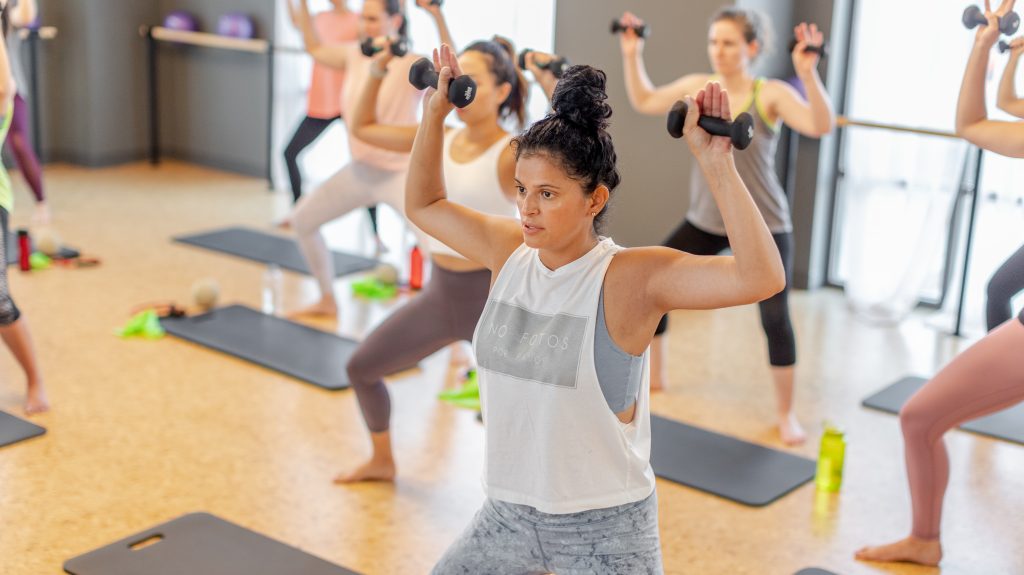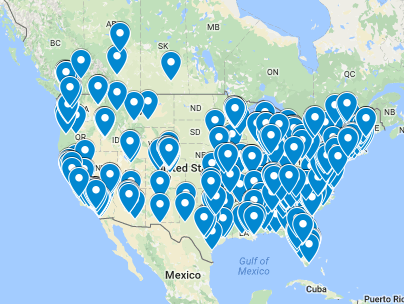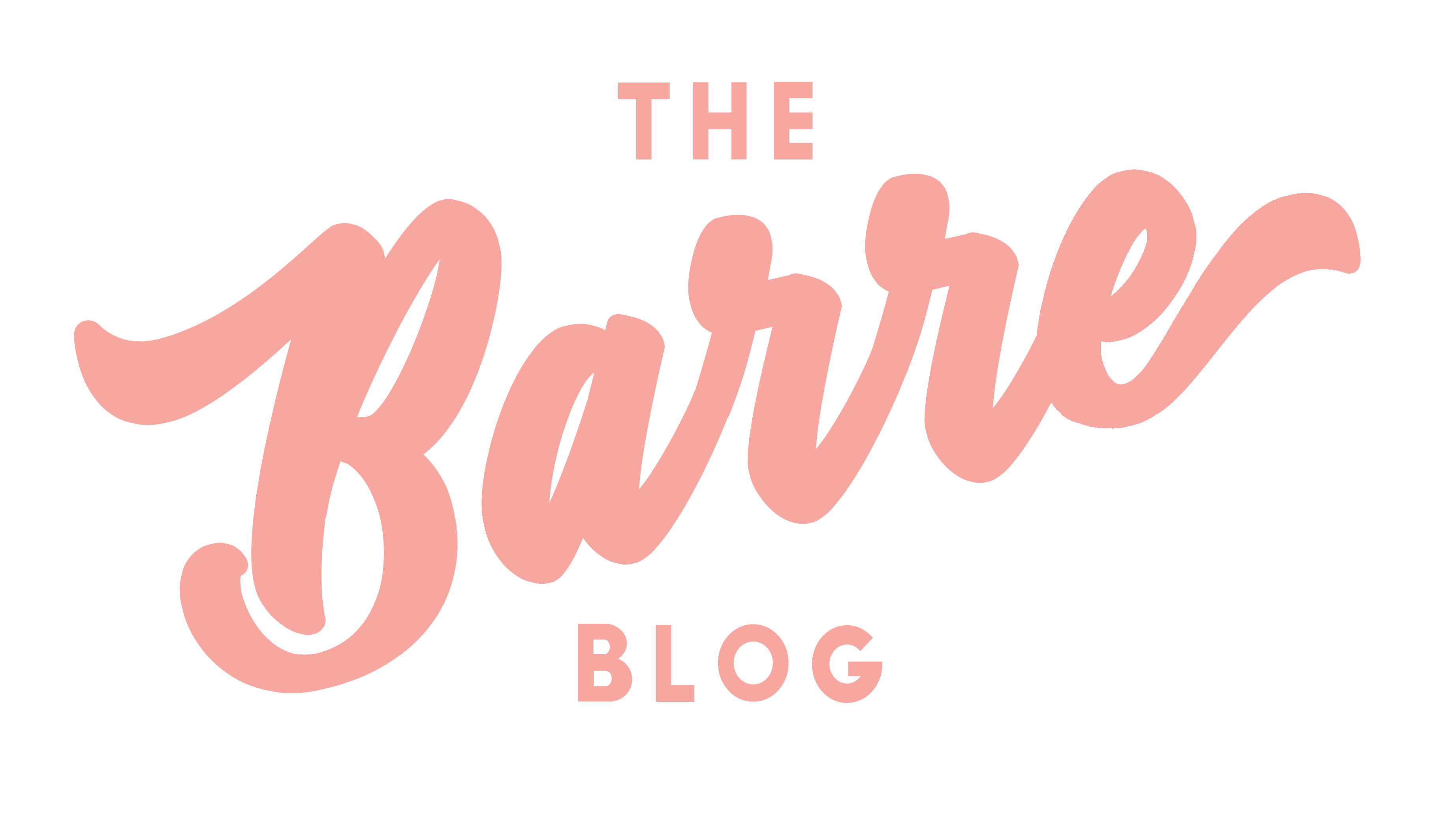
Being a fitness instructor is a rewarding job, whether it’s barre, OrangeTheory or F45. While every instructor has their own unique style, I can say a few things are certain for every fitness instructor: We love our clients, we love, and try to lead, a healthy lifestyle and we always want to be seen as a good barre instructor.
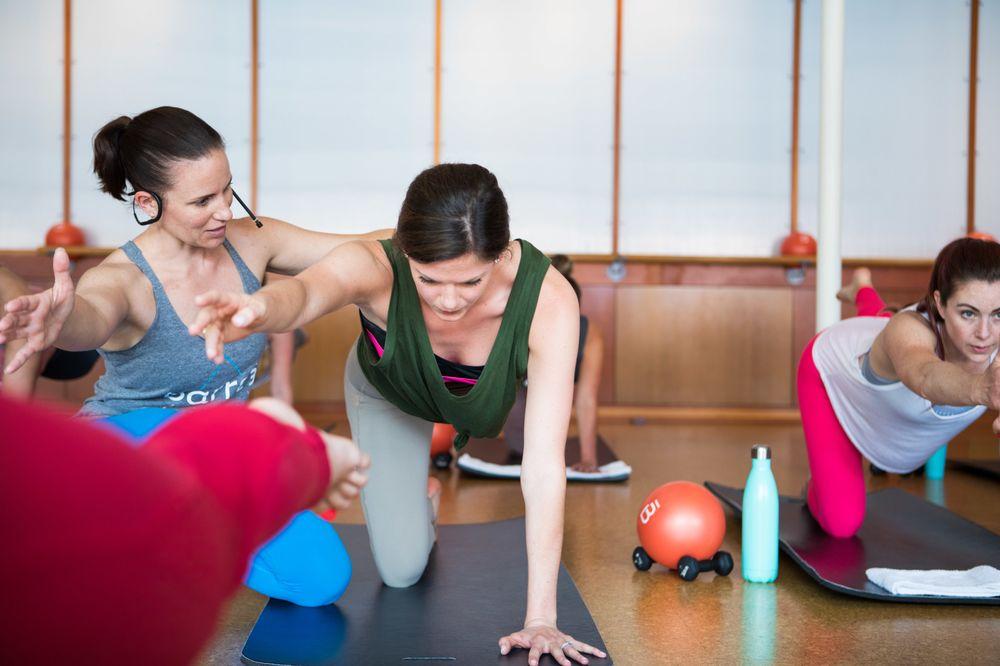
What I’ve learned about being a barre instructor
I have been a barre instructor for four years now. By no means do I think I have it all figured out, because I certainly don’t! However, I’ve learned many lessons about being a good and a bad barre instructor.
Below I use my own experiences to explain my opinions on being a barre instructor at different types of workout facilities. I list pros and cons to the four different facilities I instructed or currently instruct at.
I first started taking barre classes at a boutique barre studio while I was in college. Eventually, I fell in love with the exercise program and was asked if I would like to be an instructor, which of course I accepted the offer! I soon learned how much I enjoyed instructing barre.
Pros of the boutique studio:
- Freedom to teach whatever you would like that day.
- I would get my workout in as I taught.
- It was a beautiful set-up, one of the most beautiful studios I’ve ever seen.
Cons of the boutique studio:
- Since I didn’t have a format (such as how many sets of thigh or abdominal work to teach this day), I would sometimes have 20 minutes left of class and not know what to teach next. There wasn’t a balance or structure to the classes so you never knew what exactly you would do more of in a class (legs or arms for example).
- I taught and took the entire class. Since this is what all the instructors did, I thought this was normal. Personally, I feel when you’re performing the entire workout with the class you can’t focus on your client’s form and correct as needed. Tip: I would definitely demonstrate complex exercise moves but not the entire time.
- When you’re a boutique studio, I saw there was a struggle with helping get the word out. Not everyone knew what barre was or what type of exercise studio this facility was.
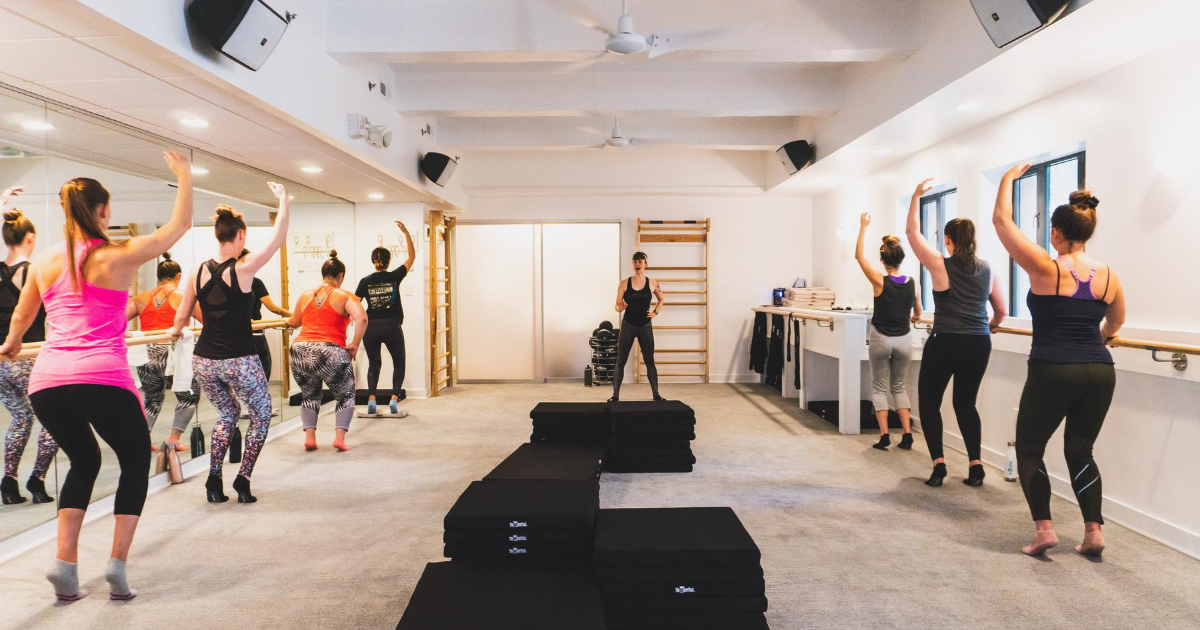
After I graduated college, I wanted to continue my love for teaching barre so I enrolled in a barre certification class, Barre Intensity. It was informative and had a great format! Once I completed the in-person training, I sent in my video online to complete the certification. Once I was certified, I then taught this method at a country club and yoga studio.
Pros of the country club:
- I was paid really well. 40$ a class.
- I had a great mentor/supervisor who had been teaching pilates and barre for a long time.
- The class times I taught worked great with my schedule.
Cons of the country club:
- I never knew who or how many people I would have prior to class. Most studios use MindBody as a way for people to sign up for class. Most country clubs or large gyms do not use this.
- Some clients didn’t care about the form. In country clubs and large gyms, people usually want to get their sweat on fast and easy, and that is completely fine but for barre it’s tricky because it takes time to learn the form and moves. There would be times where I would try to correct a client’s form and they would walk out!
Pros of the yoga studio:
- I loved the instructors and owners I worked with.
- I enjoyed all the classes the studio offered.
- I made wonderful relationships.
Cons of the yoga studio:
- The clientele wasn’t there for barre so we had a hard time building up a demand for barre classes. Since it was known as a yoga studio, people went there for yoga not barre. Note: I still teach a barre class with one or two clients, but I love having a full class because I feed off of my class’s energy.
- I was paid per head. This means that I would get paid a base then for every three to five clients I bring in over a certain amount… I would get paid an extra amount. For example, I was paid a base of 15$ an hour but for every person over 10 people in the class I would get an extra 2$ per head. This was difficult when people weren’t there for barre. Additionally, I feel this creates a competitive nature among instructors instead of a team environment.
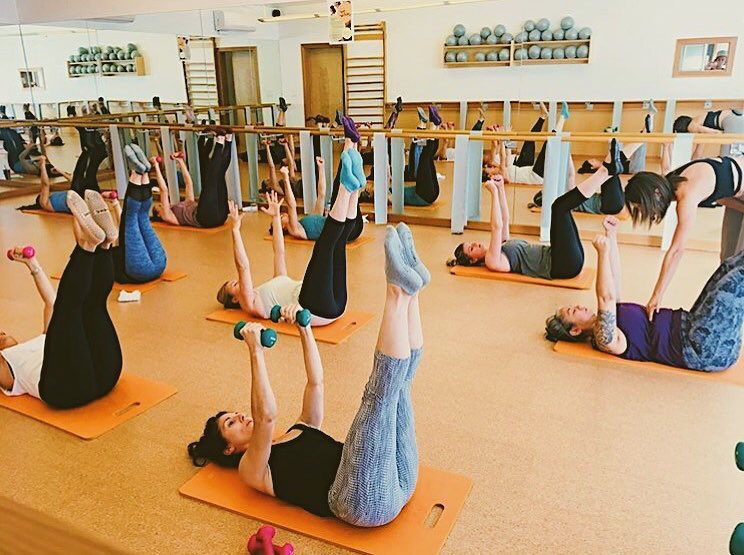
After realizing I wanted to instruct solely for a barre studio, I did some research to see what was in my area. I found The Dailey Method Indianapolis, a barre and cycle studio. This studio is a franchise, meaning there is more than one studio. Right away, I was hooked on the workout. I contacted the owners to see if they needed instructors and luckily for me, they were!
I have been a Dailey Method instructor since 2018 and I love everything about it–the workout format, the clients, the instructors and the owners!
If I were to list a con, I would make note that if you do instruct for a franchise such as, The Dailey Method, typically you have to sign a non-compete agreement. Some studios are more strict than others (I don’t think we are strict), but this can limit how many studios you could potentially instruct at.
How to be a good barre instructor
Every instructor cares about their clients (at least I hope so!!). As an instructor, I want to make meaningful relationships with all my clients. I want to learn about their fitness goals, the challenges they face with barre and on a personal level, about their family and life.
From a client and barre instructor perspective, I expect the following from the instructor when taking any fitness class. I feel these make instructors experienced and good at what they do.
- Modifications. How can I make an exercise less intense or how can I do this specific exercise in a way that doesn’t hurt an injured body part? Or maybe you are just super sore and need to scale a move back for a few reps. I personally like when instructors begin an exercise as the modification and make the move harder from there.
- Motivational. If I had a bad day and don’t think I can push myself at the gym, I want someone else to do that for me. I want to get my money’s worth!
- A format/outline. When I try a barre class or any fitness class, as an instructor, I can pick up on the format of the class pretty quickly. While I do love innovation with certain exercise moves, for the most part, I want the workout format I know I signed up for.
- Being Human. I think this gets overlooked a lot. I enjoy when my instructor uses her own personal experience to explain a move or uses her humor to correct a word she messed up. For example, I tell my clients often how tight my hamstrings are so there is no one I could do this move I’m about to make them all do. I think it’s important for clients to realize that your instructor is learning and growing in their barre journey just like you. We are human and make mistakes too! The other day I meant to say “lead with your chest..” when I actually said “lead with your breasts!” My clients laughed it off with me.
I would love to hear your feedback! Again, these are my own opinions and thoughts. Everyone is unique and has a different view on what makes an instructor good or bad.

